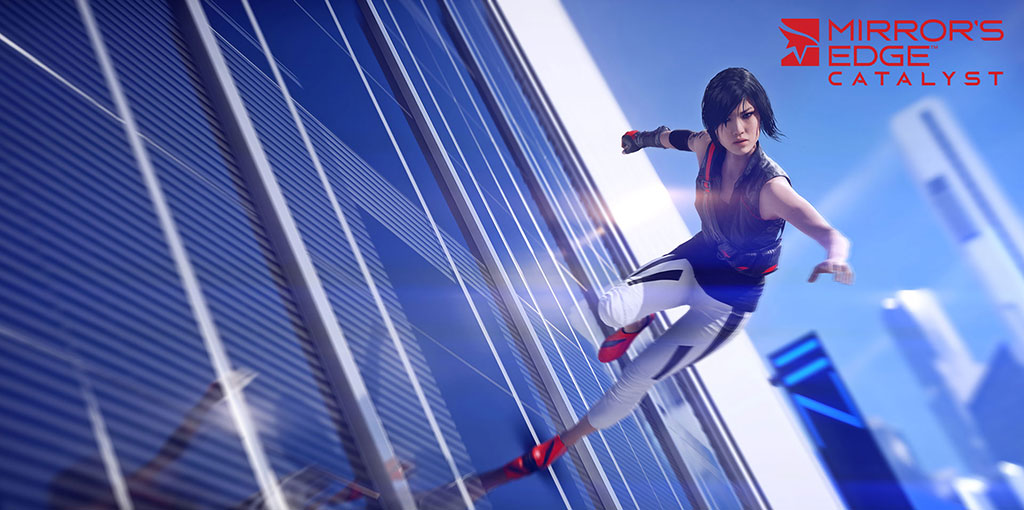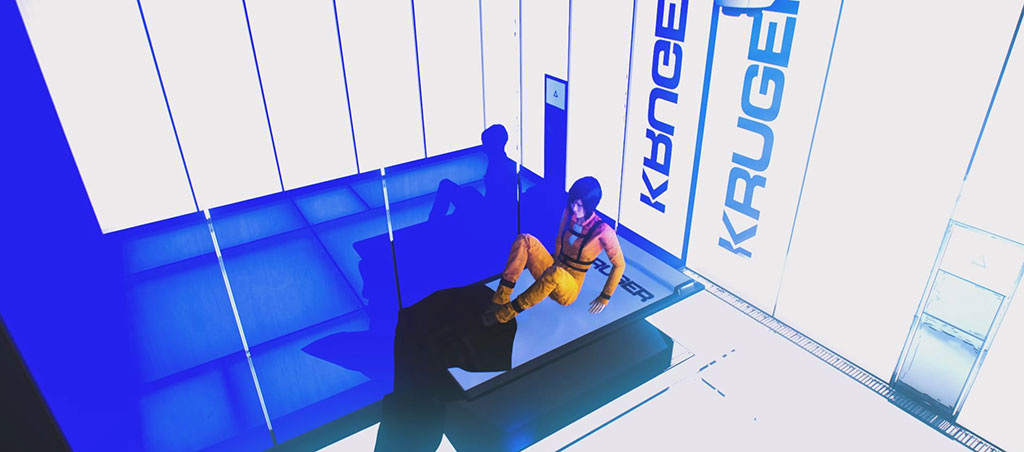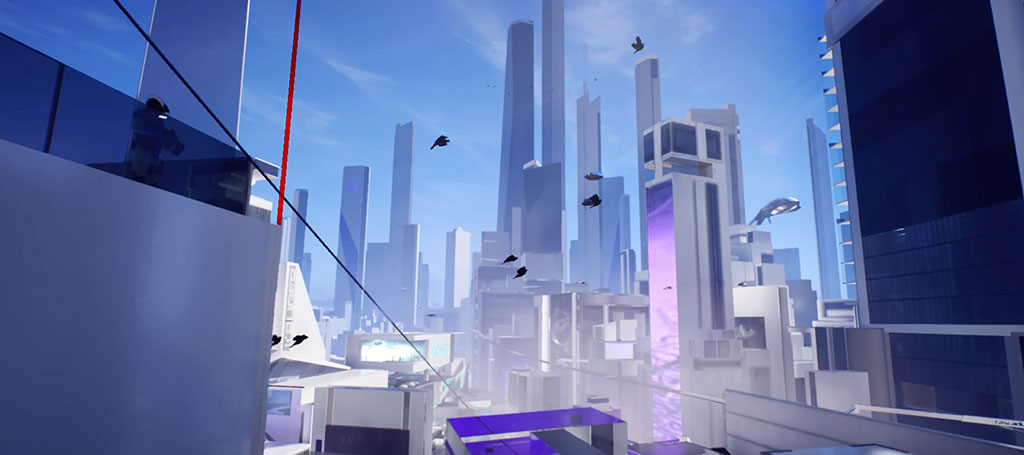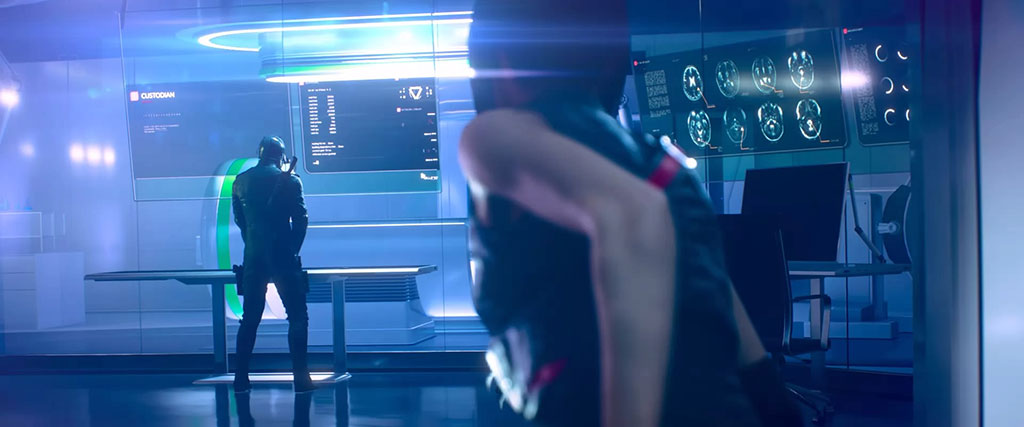Mirror’s Edge Catalyst: Reimagining the City of Glass

In 2008, Electronic Arts (EA) and Dice released Mirror’s Edge. Its futuristic cityscape, cut from clean lines and illuminated in bold primary colors, was a world away from the tank treads and trench warfare of Dice’s iconic Battlefield franchise. Gameplay was equally innovative. It incorporated parkour, a type of acrobatic running that generally involves running, climbing, swinging, rolling, and vaulting across urban environments. Players that were sent hurtling over obstacles and off walls found a game that was unlike anything that had come before it. Now, after an eight-year hiatus, players can return to the City of Glass in Mirror’s Edge Catalyst.

The latest iteration of the Mirror’s Edge series reimagines the original game and introduces Faith to players once again. As a deliberate reboot, Mirror’s Edge Catalyst charts Faith’s rise from runner to insurgent as she battles for freedom against the ruling corporation and underworld organizations. Gaming has changed significantly since Mirror’s Edge was initially announced in 2007, which may could explain Dice’s decision to reinvent the world. The Assassin's Creed franchise, for example, launched around the same time as Mirror’s Edge and Ubisoft spent the following years perfecting its design with a mix of fluid combat, aerobic movement, and open world gameplay. DICE has attempted to adapt Mirror’s Edge to this new landscape with its latest release.

Where the original Mirror’s Edge provided a fairly linear experience, this new version has embraced the open world. Steel and glass spires, rendered using the Frostbite 3 engine, crawl up towards the sky, creating stunning views of this sprawling metropolis. Exploration is embraced. Zip lines, ledges, balconies, and crash mats litter the environment creating a maze of routes across the map. Movement is well designed with a small selection of buttons providing highly versatile interactions. Climbing up walls, leaping across chasms, and clambering up pipes are executed using the same controls, which makes getting around intuitive. Although controls are intuitive, outcomes can be unpredictable at times. While jumping over ledges or grabbing pipes, players can occasionally find Faith spontaneously vaulting off into chasms or flailing to grab unintended ledges. This makes movement feel less than optimal and is typical of much of Mirror’s edge Catalyst.
Players exploring the game’s myriad of rooftops will find navigation is one of the trickier aspects of Mirror’s Edge Catalyst. Runners vision is an essential aid in getting across town and completing quests. This red line snakes out in front of players, illuminating handrails, ledges, pipes, and ledges as it recommends a route across the city. It can also be incredibly infuriating. Runner’s vision regularly results in players hurtling blindly over the edge of buildings with no idea of what is ahead or simply leaves them hanging at critical junctions. Falling at just the wrong moment or failing to complete assignments regularly results in a protracted loading screen. As a consequence, movement feels less than optimal and exploration seems overly risky. In a game that should encourage players to test the limits of their environment, this feels unnecessarily punishing.
Side quests are another stumbling point in Faith’s journey. Dotted across the open world, these quests can be picked up from drop points or one of the city’s well tailored corporate citizens. These Non Player Characters feel out of place as they loiter on rooftops, stoically ignoring the rest of the world as it hurtles by. Dialogue is uninspired, ruining any sense of immersion that the game achieves and the game’s problems are compounded by a series of repetitive quests that make the open world uninviting.
Delivery drops and time trials are rarely much better, and prescribed routes around the city leave very little room for error. It is common to complete these by the thinnest of margins, discouraging exploration and incentivising players to stick to follow the path in their “runners vision”. Rewards for this effort feel lackluster. While open world exploration should fit Mirror’s Edge perfectly, the punishing loading times, a lack of quest diversity, and an incentive to play it safe make the open world uninviting.
Faith’s central story arc is a far less problematic experience and a source of some crucial variety. Quest goals are similar throughout but do not feel strong-armed into the game. Infiltrating corporate facilities and some taxing jumping puzzles are particular highlights, although combat does feel a unsatisfying..

Fighting corporate drones is initially enjoyable. Sliding down zip wires and finishing with a flying kick, dodging attacks, pushing enemies off ledges, and simply barging past obstacles feels fitting for a game that is far from a standard cover shooter. However, the hive of faceless corporate drones sent to subdue Faith quickly become inconsequential. It is rare to find many of them posing a substantial threat, even when Faith’s combat routines are hollow in comparison to Ubisoft’s Assassins.
Mirror’s Edge Catalyst is a contradiction. It is filled with great ideas and incredible potential, but it also contains moments of disappointment. Too many components of this game fail to work in a complementary fashion, and these problems undermine the simple joy of running. If you appreciated the core components of the first game and found Faith engaging, then you may still want to see more of the City of Glass.
We reviewed Mirror’s Edge Catalyst on PS4. The game is also available now on PC, and XBOX One..

